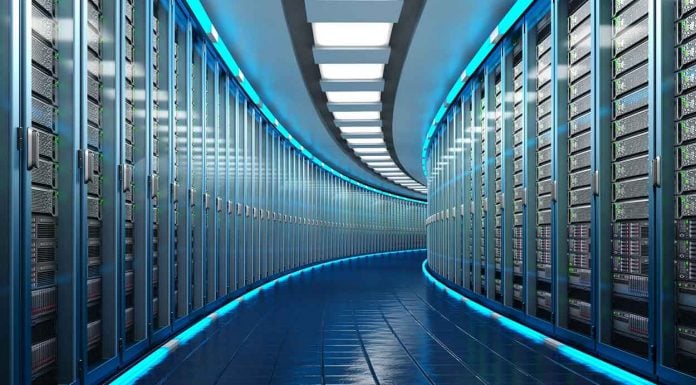Organisations across the globe are rapidly embracing sustainability goals and programs, recognising that going green is not just beneficial to our planet but also good for business. The challenge, however, is to move from goals and promises to progress and action.
Over the past few years, the world has seen accelerated growth of data, digital transformation, and of the datacenter industry. In Asia Pacific, the datacenter segment was valued at $25.58 billion in 2020 and is expected to grow at a CAGR of 12.91% to reach $59.83 billion by 2027.
Against the backdrop of sustainability, datacenters accounted for approximately 1% of global electricity demand, with global datacenter electricity use amounting to 200-250 terawatt-hours (TWh). According to the International Energy Agency (IEA), datacenters are some of the biggest consumers of energy globally, especially as demand for data services continues to rise exponentially.
The NASSCOM report titled, ‘India – The Next Datacenter Hub' revealed that the shift towards cloud has pushed investments in hyper-scale datacenters with the global datacenter market investments expected to reach $200 billion per annum by 2025.
India is expected to have a significant share in this growth with investments expected to reach $5 billion per annum by 2025 in the country. As India progresses towards becoming a global hub for datacenters, there is a need for green datacenters to take the lead, making it very important for enterprises to understand the various aspects that must be considered while setting up these sustainable facilities.
As organisations work towards improving their datacenter sustainability, there are four key aspects they should consider:
1. Environmental
There are various innovative ways that can be looked at to reduce total datacenter heat waste and the overall carbon footprint of infrastructure. This ranges from improved layouts to the implementation of more efficient cooling technology as well as the use of sustainable hardware solutions.
Futuristic technologies such as Direct Contact Liquid Cooling (DCLC) and Liquid Immersion Cooling (LIC) significantly reduce the amount of energy required to maintain server temperature. With the help of coolants, these technologies bring down the datacenter's carbon footprint marginally and help enterprises action on their sustainability goals, without compromising on data management and optimisation.
A perfect example is PhonePe's first green datacenter in India which is powered by India's first smart cooling technologies. The 4.8-megawatt facility that is built and designed with DCLC and LIC capabilities, is positioned to substantially reduce the company's carbon footprint, saving more than 25% on electricity. The data center has a planned Power Usage Effectiveness (PUE) of 1.27 as compared to the industry standard of 1.6 for air-cooled datacenters. This results in a power saving of about 1.58 MW, which assuming that a typical household consumes about 18 units a day, has the ability to light up an additional 2000 houses, on an average, in the country.
India currently has an installed renewable energy capacity of 89.63 GW, with 49.59 GW capacity under execution and is already working on expanding its alternative energy sources such as solar and wind. The use of renewable energy for green datacenters can further enable enterprises to take to the path of sustainability.
2. Financial
Any improvements in datacenter energy efficiency and reduction also can lead to significant reduction of total datacenter operating costs. By automating their datacenter operations, enterprises can focus on business and IT innovations to reduce costs and optimise manufacturing and business operations.
Through the use of superior technologies, renewable resources, and responsible consumption, organisations must invest in environmental integrity. By automating datacenter operations, organisations are free to focus on business and IT innovations to reduce costs and optimise manufacturing and business operations.
3. Compliance
At the 2021 UN Climate Change Conference of the Parties (COP26) in Glasgow, heads of state and climate experts gathered to take actions to get to net zero emissions by 2050 – reiterating the need for nations and organisations to ramp up on efforts to limit global warming.
The Indian government has initiated a mandate to reduce carbon output or the adoption of sustainable IT. Understandably, a similar emphasis has been placed at the organisational level to reduce the environmental impact of IT infrastructure and meet national and industry standards.
By setting specific objectives to make their datacenters more energy efficient, businesses can look to reduce their overall carbon footprint as well as effectively meet compliance standards.
4. Efficiency
With an energy efficient datacenter, customers set out an objective to do more with IT infrastructure within a smaller physical footprint – in other words, they strive to approach a 100% utilisation of rack and datacenter space.
Individuals and organisations are recognising the need to take action to reduce the impact on the environment. As IT sustainability becomes a growing priority, organisations should design their datacenters to optimise energy usage. By working with the right technology partners and adopting a holistic approach that addresses the environmental, financial, compliance, and efficiency considerations, they can successfully help safeguard the environment while lowering their long-term operating costs.











